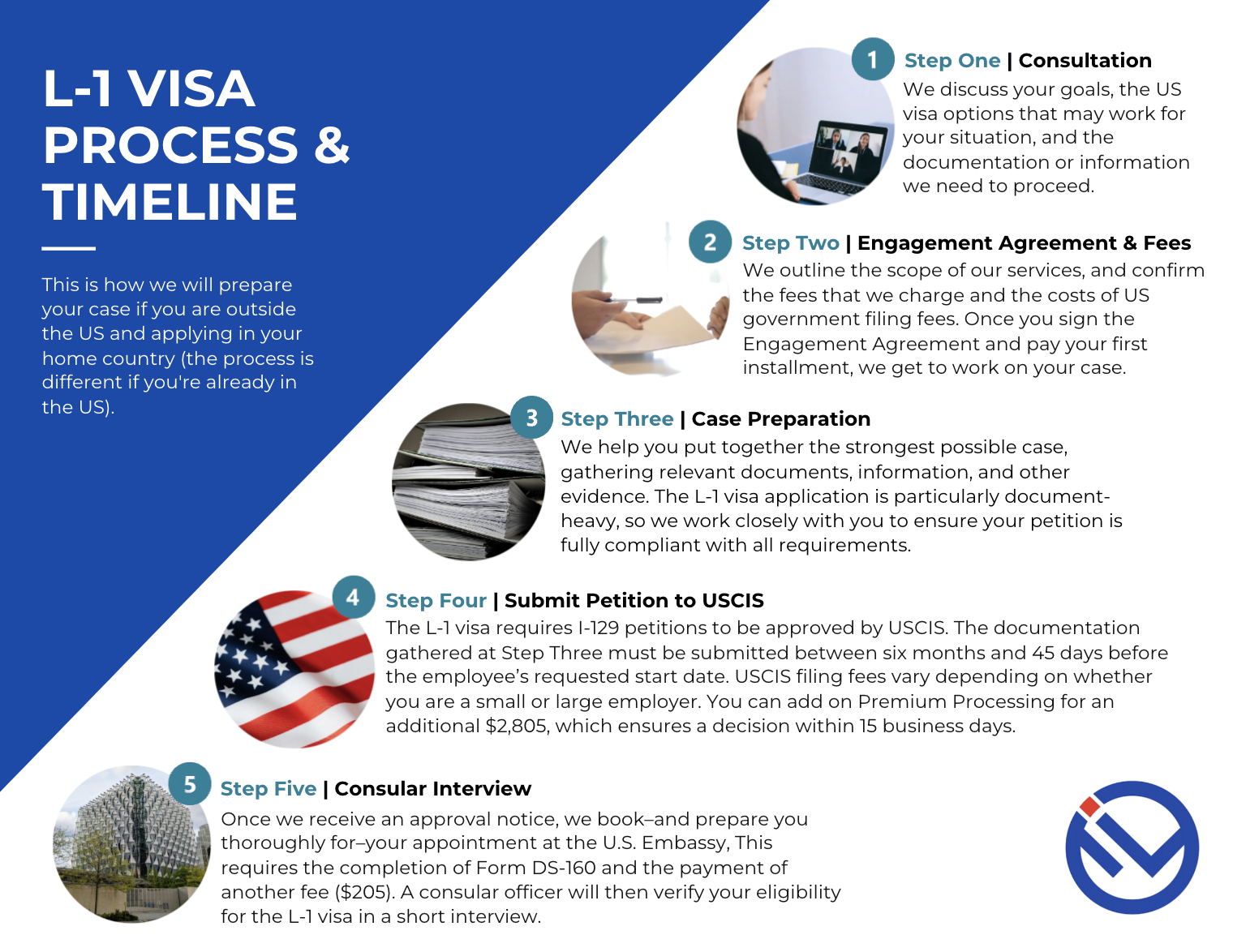L-1 Visa requirements
The L-1A visa is a nonimmigrant visa that allows employers to transfer executives and managers (L-1A), as well as specialized-knowledge employees (L-1B), from an organization’s overseas office to one of its offices in the US.
If the company does not yet have operations in the US, the visa can be used by a transferred employee to set one up.
Unlike the E-2 visa, there is no need to be a national of any particular country.
Dependent family members (spouses and children under 21) may accompany the L-1 visa holder by using the L-2 visa.
-
The company must be either a parent, branch, affiliate or subsidiary of a foreign firm operating abroad.
-
The individual seeking the visa must have been employed by a qualifying foreign employer for at least one continuous year within the three years immediately preceding their application for the L-1 visa.
-
This means the visa-holder will primarily be responsible for directing and overseeing the organization's operations, or managing a significant part of it. This requirement ensures that the visa is granted to individuals who hold key leadership roles within the company and are integral to its functioning in the U.S.
-
Under the regulations, doing business means “the regular, systematic, and continuous provision of goods or services or both by a qualifying organization. Doing business does not include the mere presence of an agent or office of the qualifying organization in the United States and abroad.”
In general, the U.S. company and the foreign company must be “doing business” for at least one full year before applying on behalf of an employee. But if the U.S. entity has been operating for less than a year, it may file a “new office” petition. New office petitions give foreign employers an opportunity to send an employee to the U.S. to establish a new office, making it a useful option for startups.
-
Foreign employers seeking to send an employee to the United States as an executive or manager to establish a new office must show:
They have a physical location for the new office;
The employee has been employed as an executive or manager for one continuous year in the three years before filing the petition; and
The new office will support an executive or managerial position within one year of the approval of the petition.
-
New offices: Qualified employees entering the United States will be allowed a maximum initial stay of one year.
Existing offices: Maximum initial stay of three years.
L-1 FAQs
-
Usually, the L-1 visa is granted for an initial period of 3 years (or one year for ‘new office’ L-1s). Extensions are possible, up to 7 years in total (L-1A) or 5 years (L-1B).
-
Yes, once your L-1 visa is approved, your spouse may work “incident to status” as an L-2 visa holder.
-
Yes, qualified employees are usually allowed to stay in the US for an initial period of three years. They can request an extension in increments of up to two additional years, until the employee reaches the maximum of seven years for an L-1A visa (provided the organisation is still operating as a multinational organization during this period) or five years (L-1B).
-
Yes, potentially, but it’s sensible to discuss how you meet the eligibility requirements with a lawyer. Often, the EB-1C green card route is possible for L-1 visa holders, given the significant overlap in requirements.

